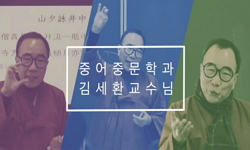The present study examined the classification of 『Suijeon』 Ilmuns and their genre characteristics. It purposed to prove that the basic characteristic of tales is in their supplementation of authentic history and to maintain that the basic characte...
http://chineseinput.net/에서 pinyin(병음)방식으로 중국어를 변환할 수 있습니다.
변환된 중국어를 복사하여 사용하시면 됩니다.
- 中文 을 입력하시려면 zhongwen을 입력하시고 space를누르시면됩니다.
- 北京 을 입력하시려면 beijing을 입력하시고 space를 누르시면 됩니다.

『殊異傳』 逸文의 분류와 장르적 성격 : 志怪敍事 전통의 맥락을 중심으로 Focused on the Context of Jigwe tradition = The Classification of『Suijeon』Ilmuns and Their Genre Characteristics
한글로보기https://www.riss.kr/link?id=A45004672
-
저자
유정일 (청주대학교)
- 발행기관
- 학술지명
- 권호사항
-
발행연도
2004
-
작성언어
Korean
-
주제어
수이전 일문 ; 수이전 ; 지괴 ; 전기소설 ; 최치원 ; 수삽석남 ; 『Suijeon』 Ilmuns ; Suijeon ; Jigwe ; Romance ; Choichiwon ; Susapseoknam
-
KDC
810.5
-
등재정보
KCI등재
-
자료형태
학술저널
-
수록면
217-240(24쪽)
- 제공처
- 소장기관
-
0
상세조회 -
0
다운로드
부가정보
다국어 초록 (Multilingual Abstract)
『Suijeon 』 Ilmuns are largely classified into tales and romances, and tales were sub-divided again into mythological tales, Buddhist tales, historical figure tales and miscellaneous tales. Mythological tales include <Talhae>, a mythological tale about the foundation of a nation, and <Yeongoseo>, a tale explaining the origin of things. Buddhist tales include <Ado>, 「Wongwang」, 「Bogae」 and 「Howon」, which took the form of monks' biographies or Buddhist miracles. Historical figure tales present episodes related to historical figures. 「Seondeokyeowang」, 「J uktongminyeo」, 「Noonghwagu」, etc. belong to this type of tales. Miscellaneous tales include 「Jigwi」, 「Susapseoknam」 and 「Simhwayotap」, which describe various stories in the secular world. In addition, 「Choi, chiwon」 was classified as a romance novel.
The significance of『Suijeon』.Ilmuns in the history of novels, which shows the transitional form in the transformation from semi-historical narrations to romance novels, is that they provide a lead to the understanding of the development process of Korean romance novels. It is also remarkable that the tradition of narrating unrealistic contents originated from 『Suijeon』, a literature supplementary to authentic history. In addition, it was found true that Buddhism influenced the establishment of early romance novels.
The present study examined the classification of 『Suijeon』 Ilmuns and their genre characteristics. It purposed to prove that the basic characteristic of tales is in their supplementation of authentic history and to maintain that the basic characteristic of『Suijeon』 Ilmuns is also in its supplementation of authentic history. 『Suijeon』 Ilmuns dealt with surrealistic and unrealistic historical affairs that were not adequate to be included in authentic history.
『Suijeon 』 Ilmuns are largely classified into tales and romances, and tales were sub-divided again into mythological tales, Buddhist tales, historical figure tales and miscellaneous tales. Mythological tales include <Talhae>, a mythological tale about the foundation of a nation, and <Yeongoseo>, a tale explaining the origin of things. Buddhist tales include <Ado>, 「Wongwang」, 「Bogae」 and 「Howon」, which took the form of monks' biographies or Buddhist miracles. Historical figure tales present episodes related to historical figures. 「Seondeokyeowang」, 「J uktongminyeo」, 「Noonghwagu」, etc. belong to this type of tales. Miscellaneous tales include 「Jigwi」, 「Susapseoknam」 and 「Simhwayotap」, which describe various stories in the secular world. In addition, 「Choi, chiwon」 was classified as a romance novel.
The significance of『Suijeon』.Ilmuns in the history of novels, which shows the transitional form in the transformation from semi-historical narrations to romance novels, is that they provide a lead to the understanding of the development process of Korean romance novels. It is also remarkable that the tradition of narrating unrealistic contents originated from 『Suijeon』, a literature supplementary to authentic history. In addition, it was found true that Buddhism influenced the establishment of early romance novels.
목차 (Table of Contents)
- 1. 들어가는 말
- 2.『殊異傳』일문의 지괴적 성격
- 3.『殊異傳』일문의 분류
- 4.『殊異傳』일문의 서사문학사적 의의
- 5. 나오는 말
- 1. 들어가는 말
- 2.『殊異傳』일문의 지괴적 성격
- 3.『殊異傳』일문의 분류
- 4.『殊異傳』일문의 서사문학사적 의의
- 5. 나오는 말
동일학술지(권/호) 다른 논문
-
- 한국어문학회
- 한영란
- 2004
- KCI등재
-
- 한국어문학회
- 한명희
- 2004
- KCI등재
-
- 한국어문학회
- 전은경
- 2004
- KCI등재
-
- 한국어문학회
- 곽충구
- 2004
- KCI등재




 DBpia
DBpia





